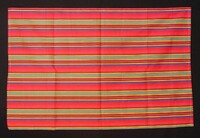3,309
riżultati fi ħdan
Suġġett
 Weave
Weave
Weave
Manner in which threads in a textile are interwoven
European Fashion Heritage Association
National Museum of World Cultures Foundation
National Museum of World Cultures Foundation
National Museum of World Cultures Foundation
National Museum of World Cultures Foundation
National Museum of World Cultures Foundation
European Fashion Heritage Association
National Museum of World Cultures Foundation
National Museum of World Cultures Foundation
National Museum of World Cultures Foundation
National Museum of World Cultures Foundation
National Museum of World Cultures Foundation
National Museum of World Cultures Foundation
National Museum of World Cultures Foundation
National Museum of World Cultures Foundation
National Museum of World Cultures Foundation
National Museum of World Cultures Foundation
European Fashion Heritage Association
European Fashion Heritage Association
European Fashion Heritage Association
European Fashion Heritage Association
European Fashion Heritage Association
National Museum of World Cultures Foundation
National Museum of World Cultures Foundation
